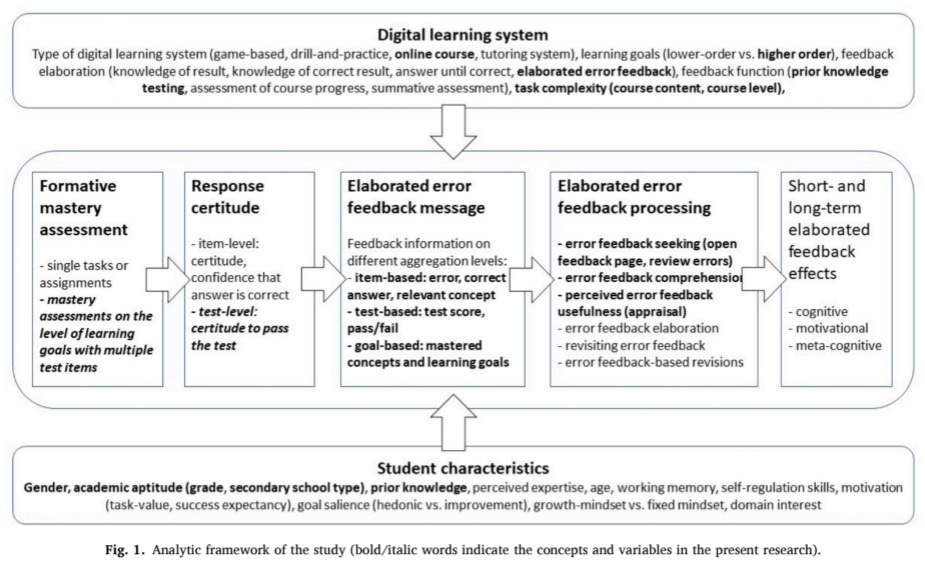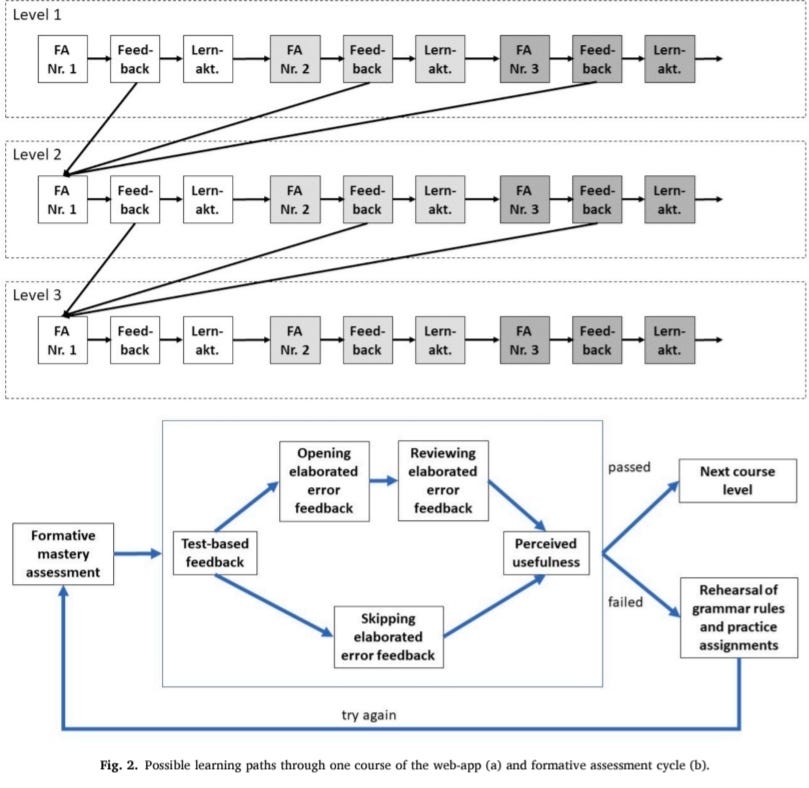Inside a Mastery-Based Learning Platform: Why Elaborated Error Feedback Often Fails, Especially for Those Who Need It Most
Digital learning promises precision: personalized pathways, mastery checks, and detailed feedback to help students close gaps and build lasting understanding. But what happens when students simply ignore that feedback?
A new study dives into this hidden flaw inside a real-world mastery-based learning system , MasteryX, an adaptive German grammar app for secondary students. Its design will feel familiar to anyone who’s used systems like Khan Academy, ALEKS, or Duolingo:
Students move through grammar courses structured by levels.
To advance, they must pass formative mastery assessments (usually 80% or higher).
After each test, the app shows them exactly what they got wrong and provides elaborated error feedback: what the right answer was, why they were wrong, and how to avoid the mistake.
Students can choose to read this feedback or skip it.
What the study found
The study tracked over 20,000 mastery asassessments across nearly 3,000 students in real secondary classrooms. The researchers looked at:
Who actually opened the detailed feedback?
Did students understand it?
Did they find it useful?
What they found is a cautionary tale for anyone building or using adaptive mastery-based systems:
Low-achieving students ,the ones who could benefit most, were the least likely to review their mistakes. Many just clicked past the feedback or didn’t open it at all.
Older students and those in more academic school tracks were more likely to check their feedback, but they were also more skeptical about its usefulness.
Task complexity mattered: The harder the grammar rules, the less likely students were to dig into the explanations.
And here's an important finding
Students who were confident they’d passed, but failed, were more likely to check the feedback.Mistakes that surprise us can spark curiosity, a pattern researchers call the hypercorrection effect.
Finally, the system’s simple comprehension check, asking students to click “I understand my mistake” , turned out to be unreliable. Many students just clicked through without truly reflecting.
Why it matters
We love to believe that feedback, especially detailed, clear, well-crafted feedback, will naturally lead students to learn more. But in a mastery-based system, feedback only works if students actually engage with it.
This study shows that when students are given the choice to ignore feedback, many do , especially those who struggle the most. That means the very students who should benefit most from elaborated feedback may never use it at all.
When digital systems make error feedback optional and passive, they risk becoming fancy test engines rather than engines of real learning.
Design lessons for educators and edtech
So what can we take from this?
Design for friction. If feedback is optional, many will skip it. Make reviewing mistakes part of the flow , not an extra click.
Keep feedback clear and digestible, especially for complex tasks. Chunk explanations. Add visuals or examples that make abstract rules concrete.
Watch the confidence gap. Use simple confidence checks to spot students who were certain but wrong , they’re more likely to dig into corrections if nudged.
Don’t equate clicking with comprehension. A single “I understand” button is not enough. Embed short re-checks or reflection prompts.
Teach students how to use feedback. Digital mastery systems still rely on human support ; modeling, discussion, and self-regulation skills are key.
Mastery-based digital learning can be powerful, but only if feedback loops are closed. What matters is not just what the system provides, but what the student does with it. Sometimes, the biggest barrier isn’t the quality of our feedback; it’s the quiet click that skips it altogether.





